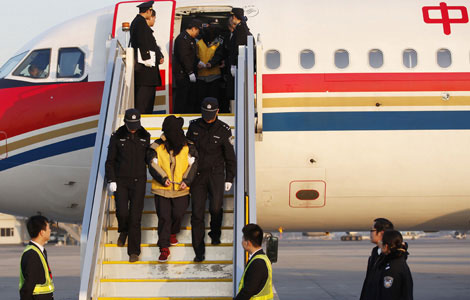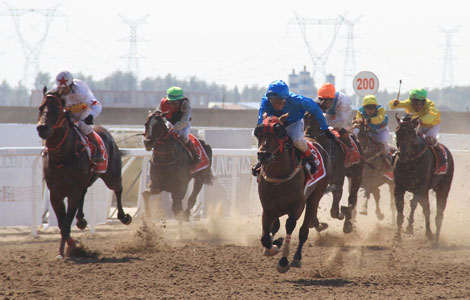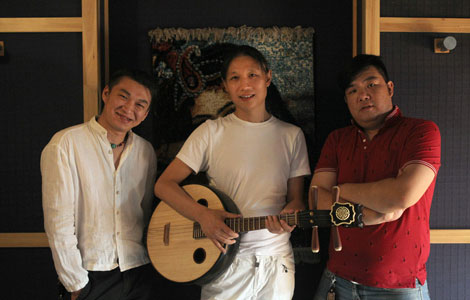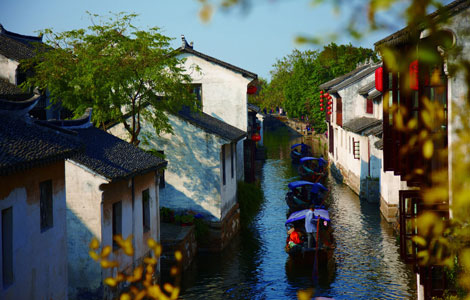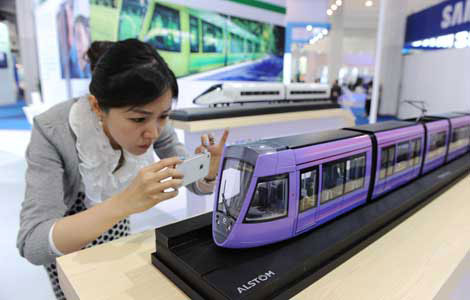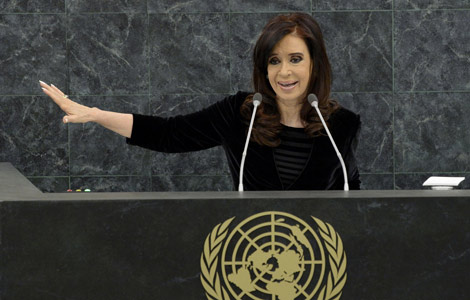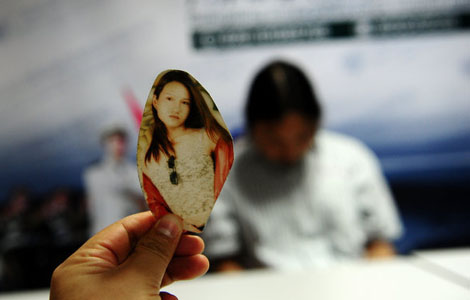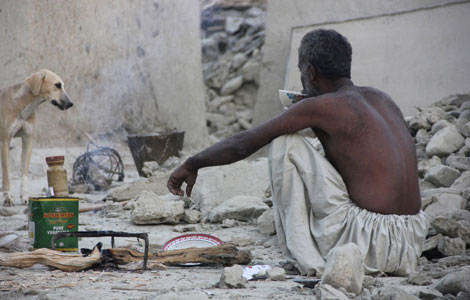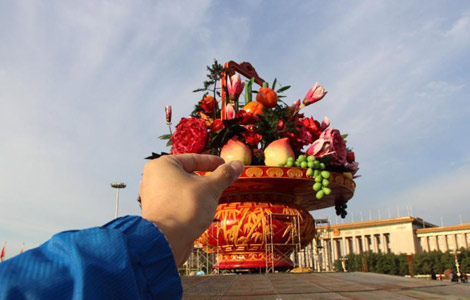Overseas mines 'facing obstacles'
Updated: 2013-09-26 07:13
By Du Juan in Qingdao, Shandong (China Daily)
|
||||||||
China's overseas mining investment projects are facing obstacles, while domestic output is steadily increasing to meet the country's demand, experts said on Wednesday.
"To further secure mineral resources, China has accelerated overseas mining investments in past years, but many operations face a gloomy future," said Liu Xiaoliang, secretary-general of China's Metallurgical Mines' Association, during the 13th China International Steel and Raw Materials Conference held in Qingdao, Shandong province.
China has 13 overseas mines in operation with a total annual output of 62 million metric tons, which accounted for 8.3 percent of China's annual imports last year, Liu said.
Comparatively, in Japan and many European countries, the overseas mines' output represents more than 50 percent of their imports, he said.
Chinese companies invested in overseas iron ore projects with total reserves of more than 98.72 billion tons, but most of the iron ore needs to be processed, which results in relatively high costs.
"Chinese companies have been developing their overseas resources for more than seven years, but very few of them have projects in operation," said Liu. "Most of them are still at the pre-operation stage and it's difficult to say when these projects will be eventually put into operation."
He said that infrastructure, including water supply, power and ports, is still a big challenge for Chinese companies in overseas mining projects.
"Some projects have much higher investments in infrastructure than those for ore production," he said.
According to public data, the cost of Australian ore is around $30 to $40 a ton.
However, Liu said that some Chinese companies, such as CITIC Pacific Ltd, a Hong Kong-based conglomerate, have costs as high as $100 a ton in their Australian mines.
"There will be no cost advantage when the iron ore is shipped back," he said.
"Chinese companies will learn from previous experiences. And Australian companies are also starting to better understand the Chinese investment process," said Russell Tipper, chief executive officer of Brockman Mining Australia Pty Ltd.
He said a greater understanding between both sides will ensure more robust and sustainable investments in the long term.
In addition, the investment focus of Chinese companies is expected to change from high capital intensity magnetite projects to less capital-intensive hematite projects, said Tipper.
"There's still lots of interest in outbound investment by Chinese companies," he said. "I believe past investments have been in the magnetite sector, which is less mature in Australia compared with the hematite sector. These projects also have high capital intensity which can sometimes result in cost overruns."
At the same time, China's domestic iron ore output is increasing and has higher quality.
According to Liu, domestic iron ore output will reach 1.41 billion tons this year, up 7.5 percent year-on-year.
China's iron ore capacity was 1.58 billion tons in 2012 and the country's real output reached 1.31 billion tons.
Most Viewed
Editor's Picks

|

|

|

|

|

|
Today's Top News
UN resolution on Syria's chemical weapons urged
Death toll rises to 328 in SW Pakistan's quake
China gaining market share in military drones
Taipei, LA and Singapore top travel search list
China builds pilot free trade zone to further open up
China reduces intervention and facilitates business
Xi promotes 'mass line' campaign
Youth short on safe sex awareness
US Weekly

|

|
